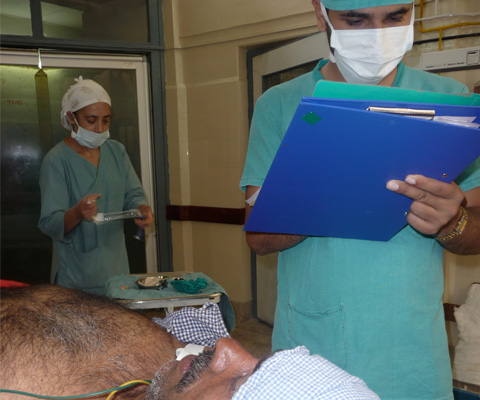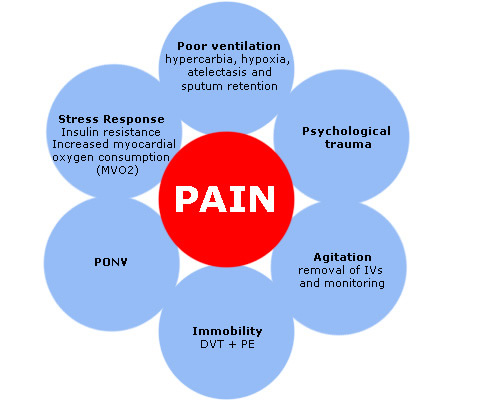Problems that occur within PACU include:
- Obstructed airway
- Inadequate reversal of muscle relaxant
- Pain
- Postoperative Nausea and Vomiting (PONV)
- Treatment of PONV

Monitoring the patient
Obstructed airway
Four signs that would alert you to an obstructed airway are:
- Rocking movement of the abdomen as the diaphragm causes negative pressure against an obstructed airway
- Marked descent of the trachea during obstructed inspiration
- No misting of the mask
- With partial movement of air through the airway, breathing is noisy
Inadequate reversal of a muscle relaxant
Signs that there is inadequate reversal of a muscle relaxant are:
- Uncoordinated respiratory movements
- Shallow disorganized ventilation
- Uncoordinated twitching movements of muscles
- Nerve stimulation shows fade of tetanic stimulus
- Poor hand grip
- Patient indicating they have difficulty with breathing.
Action to take in the event of inadequate reversal of a muscle relaxant
- Airway: head tilted back and jaw pushed forward
- Give oxygen
- Call for anaesthetic help
- Talk calmly to patient
- Have neostigmine glycopyrolate or atropine ready for the anaesthetist to administer if appropriate
Patient may need anaesthesia and repeat intubation.

Pain problems associated with inadequate analgesia
Action to take in the event of inadequate analgesia
If a patient is in pain:
- Administer prescribed pain relief
- Review observations including pain scores
- If pain is unexpected, and not relieved as would be expected, call for help
Treatment of PONV
- Repeat observations
- Ensure PONV is not caused by:
- Hypoxia
- Low blood pressure
- Pain
- Administer prescribed antiemetic
- Repeat observations
- If treatment is unsuccessful call for help